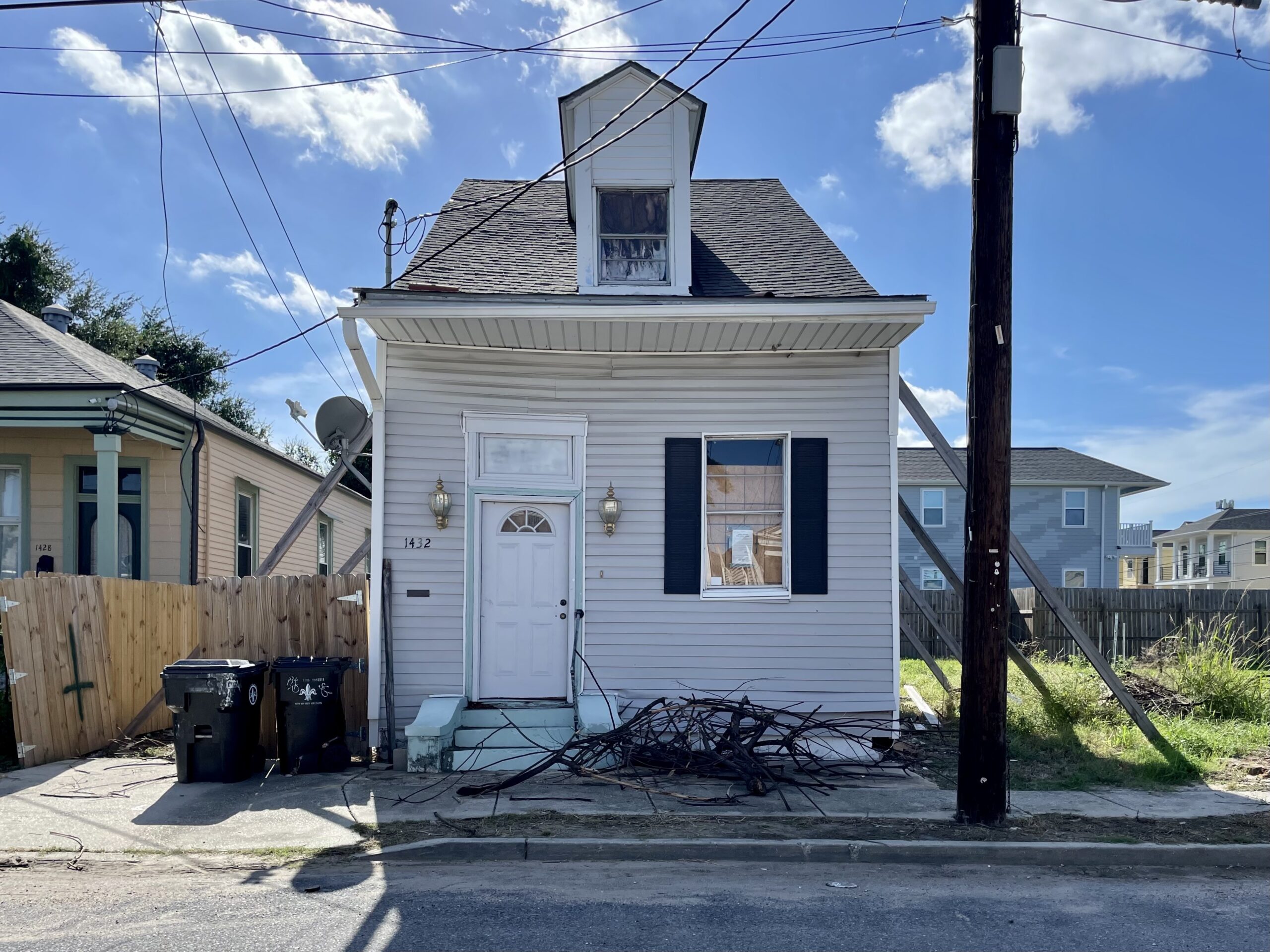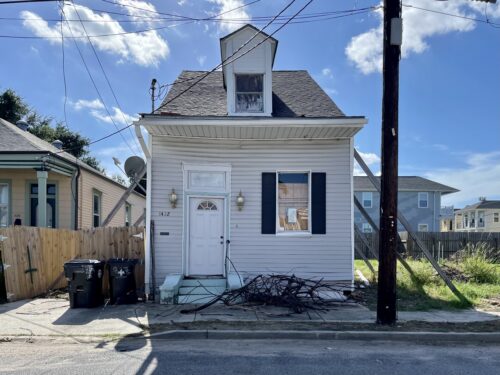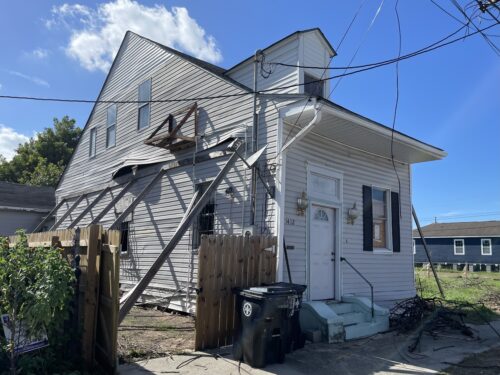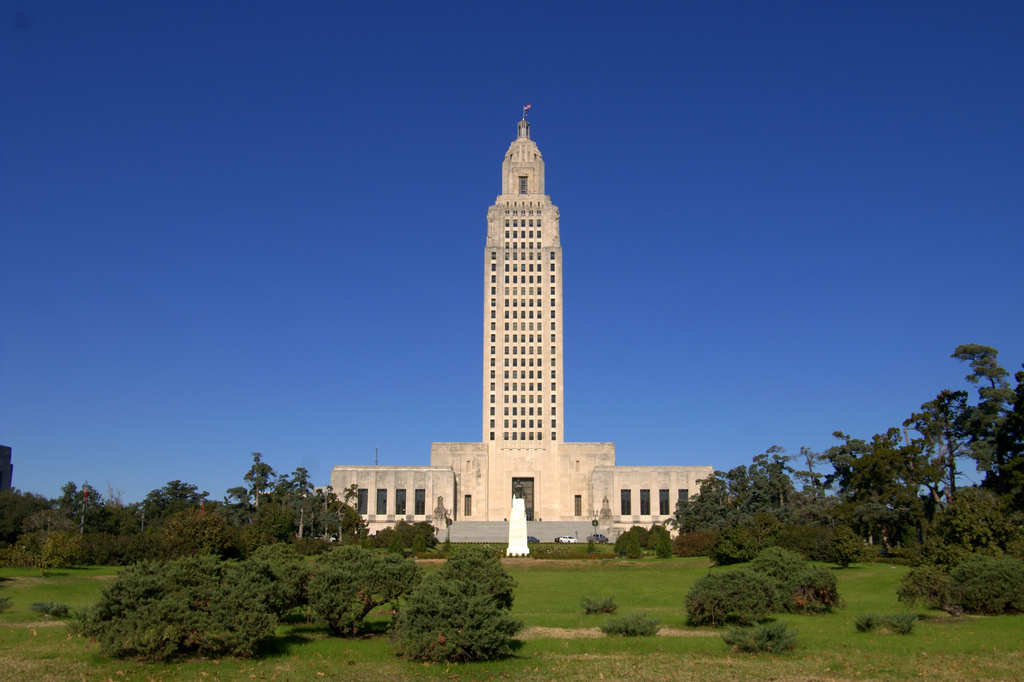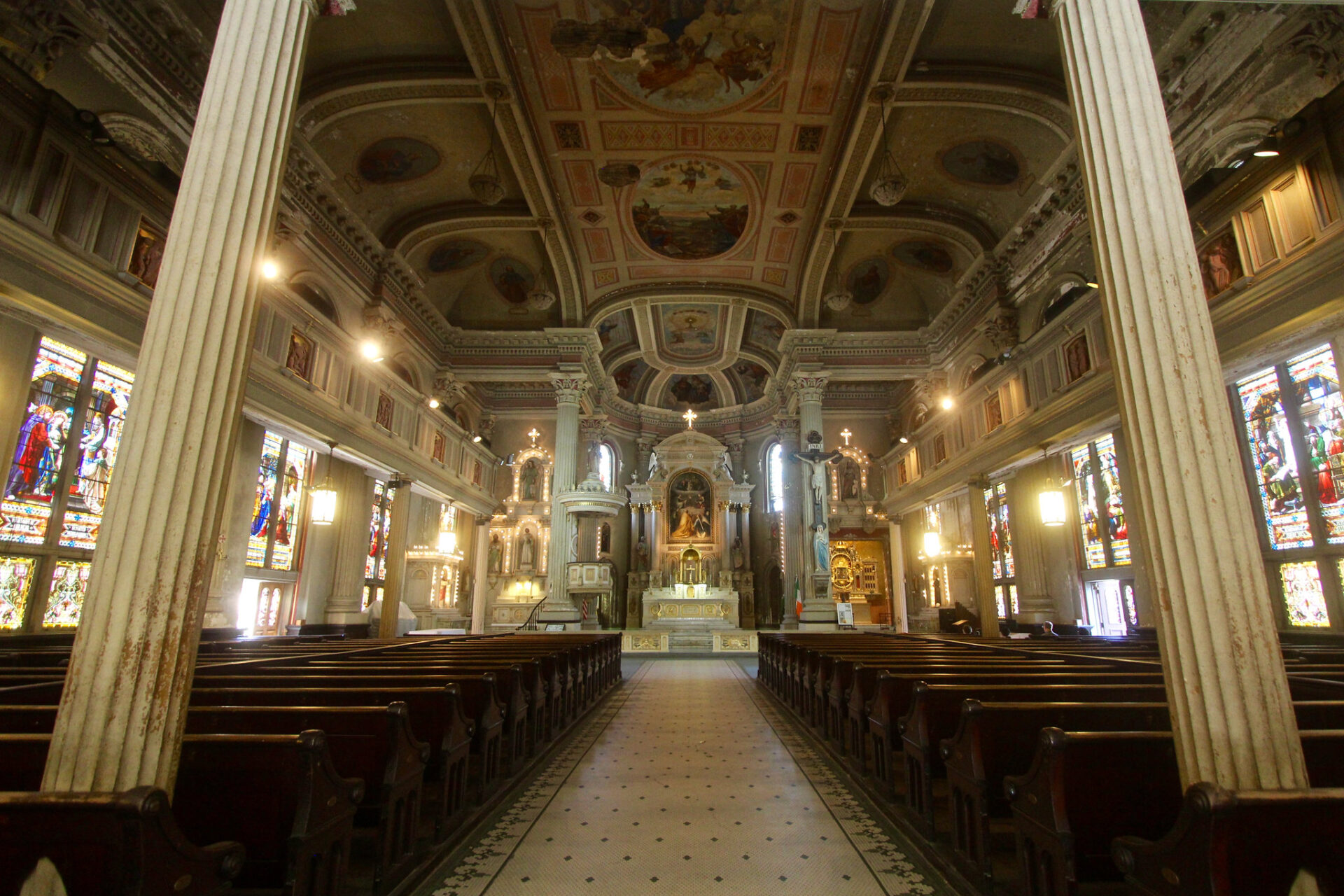The owner of the home at 1432 Touro St. — a rare two-bay Creole cottage likely built by and for free people of color prior to the Civil War — has requested a permit to demolish the house. Since the 7th Ward property falls within the New Marigny National Register Historic District, the New Orleans City Council must approve the permit and will consider the issue at its meeting on Wednesday (Sept. 6).
No one can deny that this neighborhood has suffered from national disasters as well as disinvestment. We believe that the key to the area’s rejuvenation lies in part in its past. Conserving the neighborhood’s rich architectural heritage will attract investment without erasing its history.
Photos taken in approximately 2007 show the house at 1432 Touro in fair condition and seemingly occupied after Hurricane Katrina. Non-original windows and doors as well as vinyl siding conceal the structure’s historic fabric but not its original form. These unsympathetic alterations can easily be reversed, and the property is eligible for both federal (20 percent) and state (now 25 percent) historic rehabilitation tax credits.
The “New Marigny” portion of the 7th Ward was developed after 1819 as an extension of Bernard de Marigny’s successful faubourg (suburb) downriver of the French Quarter. The Preservation Resource Center helped to nominate the neighborhood’s listing in the National Register of Historic Places. In 1993, the Louisiana Division of Historic Preservation and the PRC commissioned architect/architectural historian Robert Cangelosi to survey the district, identifying buildings by a series of type and style categories. Creole cottages made up just seven percent of the New Marigny district at the time of the 1993 survey.
Photos by Dee Allen
Most likely, rehabilitating the home at 1432 Touro will require substantial reframing and the introduction of new material. However, its remaining historic elements and form will be instantly recognizable. Creole cottages “were the products of builders and owners who were of French descent or free people of color, some of whom had come to New Orleans from Haiti in the first decade of the 19th century,” wrote author John Ferguson in the Louisiana Endowment for the Humanities’ 64 Parishes magazine. “Thus, the homes testify to the ethnic and racial mixture of the city’s population at that time.”
Conversely, removing the building will further erode the integrity of this National Register Historic District. The loss of integrity can imperial a district’s designation, as we saw in lower Mid-City when demolitions for University Medical Center led to the de-listing of approximately 18 city blocks. The City Council established the National Register Demolition Review District because there is a compelling public interest in preserving the city’s federally recognized historic districts and thereby ensuring that the associated incentives (namely historic rehabilitation tax credits) remain available to property owners in those districts.
If the owner of 1432 Touro St. is amenable, the PRC would be glad to conduct a walk-through and provide pro bono advice. If in fact the building is in a state of structural failure, we will concede that. However, the Orleans Parish Assessor’s Office has estimated its value at $174,700, suggesting it may well be salvaged at a profit by using the available tax incentives.
Nathan Lott is PRC’s Policy Research Director and Advocacy Coordinator.



